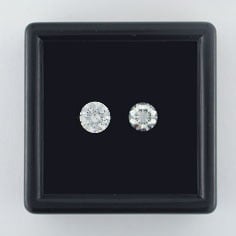strmrdr
Super_Ideal_Rock
- Joined
- Nov 1, 2003
- Messages
- 23,295
Storm will answer, but I''m betting he''s picking a fight on the value of the spread index on the new database...which is just trying to creatively push the limited data as much as you can, I think.Date: 11/10/2005 9:48:49 AM
Author: valeria101
What''s the point ?
Date: 11/10/2005 9:52:55 AM
Author: Regular Guy
Storm will answer, but I''m betting he''s picking a fight on the value of the spread index on the new database...which is just trying to creatively push the limited data as much as you can, I think.Date: 11/10/2005 9:48:49 AM
Author: valeria101
What''s the point ?
Date: 11/10/2005 2:32:06 PM
Author: oldminer
Face up surface area to weight ratio may prove a useful tool in comparing various similar diamonds.
Date: 11/10/2005 3:29:37 PM
Author: oldminer
Strmrdr;
The flat top diamond looks as if it would weigh less than the more acceptably cut diamond. Is this part of what you are getting at?
I agree with you Storm, and it was part of the discussion with Leonid about the new in house damond spread factor. But we decided it was too hard.

Date: 11/11/2005 1:42:16 AM
Author: Garry H (Cut Nut)
I agree with you Storm, and it was part of the discussion with Leonid about the new in house damond spread factor. But we decided it was too hard.
If you do a search you will see I have been on this wavelength for some years.
https://www.pricescope.com/community/threads/is-this-a-good-price.2615/=
I have an even more important concept that Sergey could program into DiamCalc if we could make some rules for him. This example that everyone who meets me has seen (I carry them in my pocket always) shows how much smaller diamonds with upper girdle leakage look - especially once they are dirty.
DiamCalc could estimate this effect. I think it is another of the important variables for all cuts.
Also AGS are considering weighting their grading system (behind the scenes comutation stuff from the scanned stone) to include the results of the light return etc through rotation bsaed on weighted surface area.